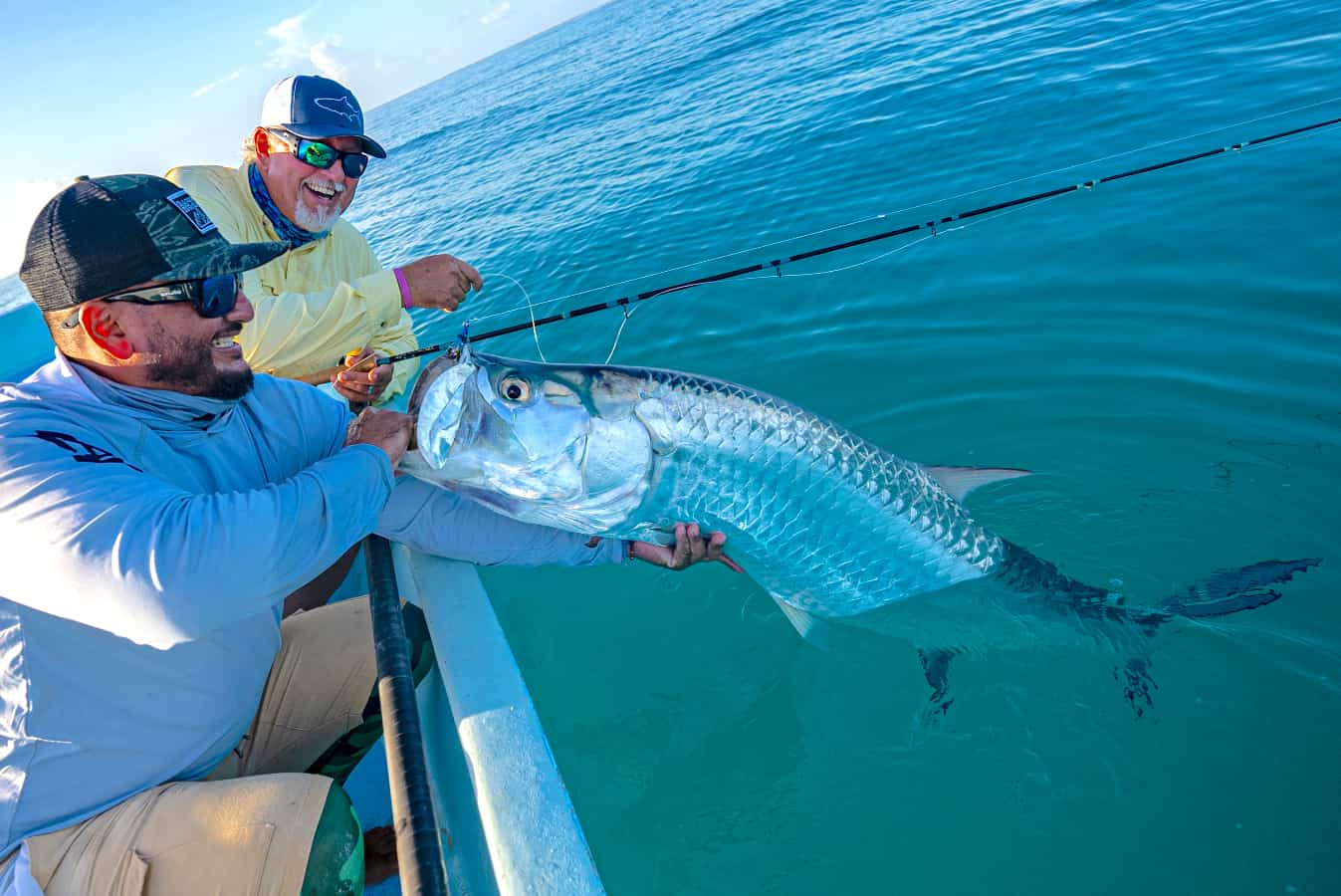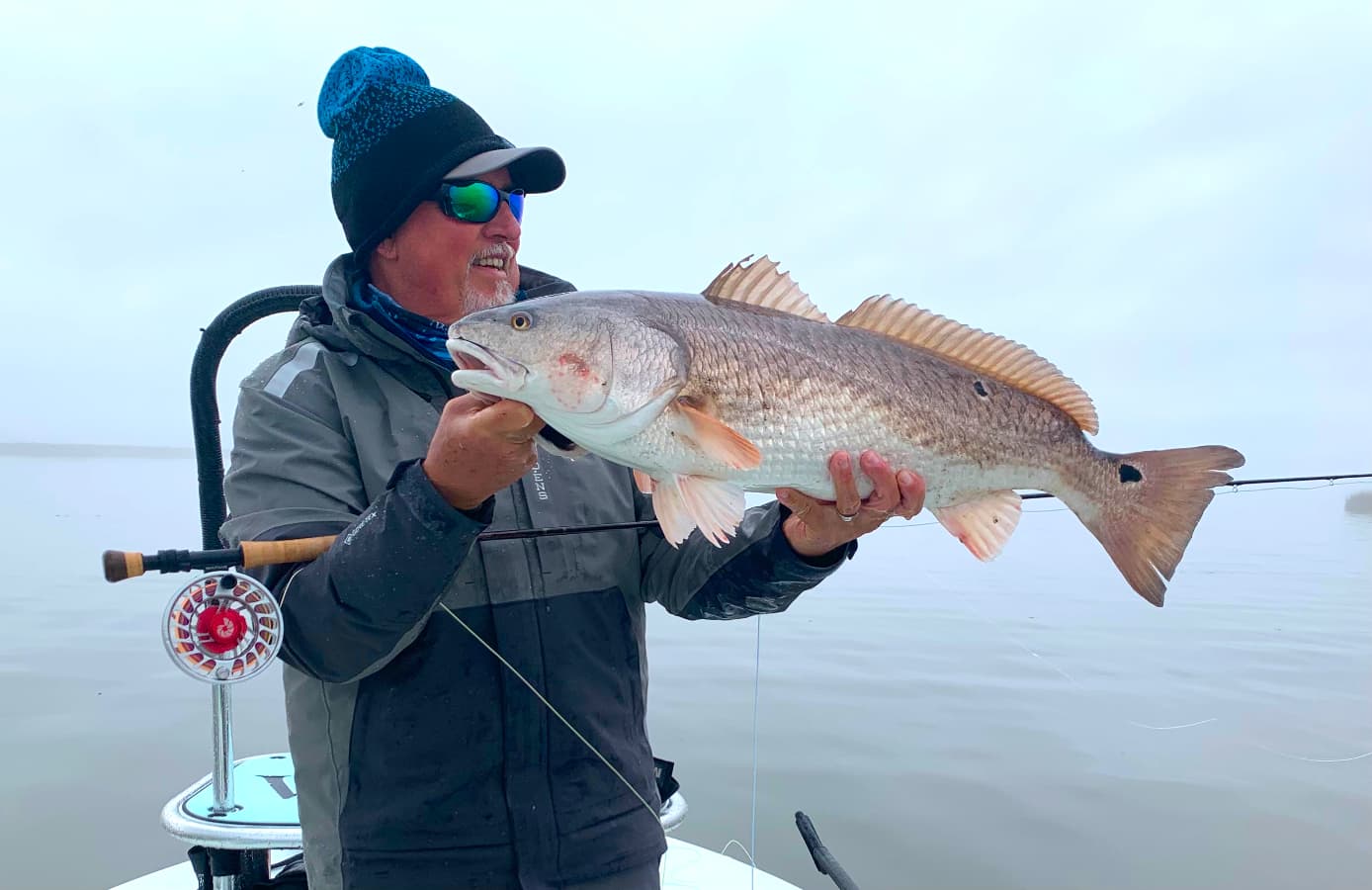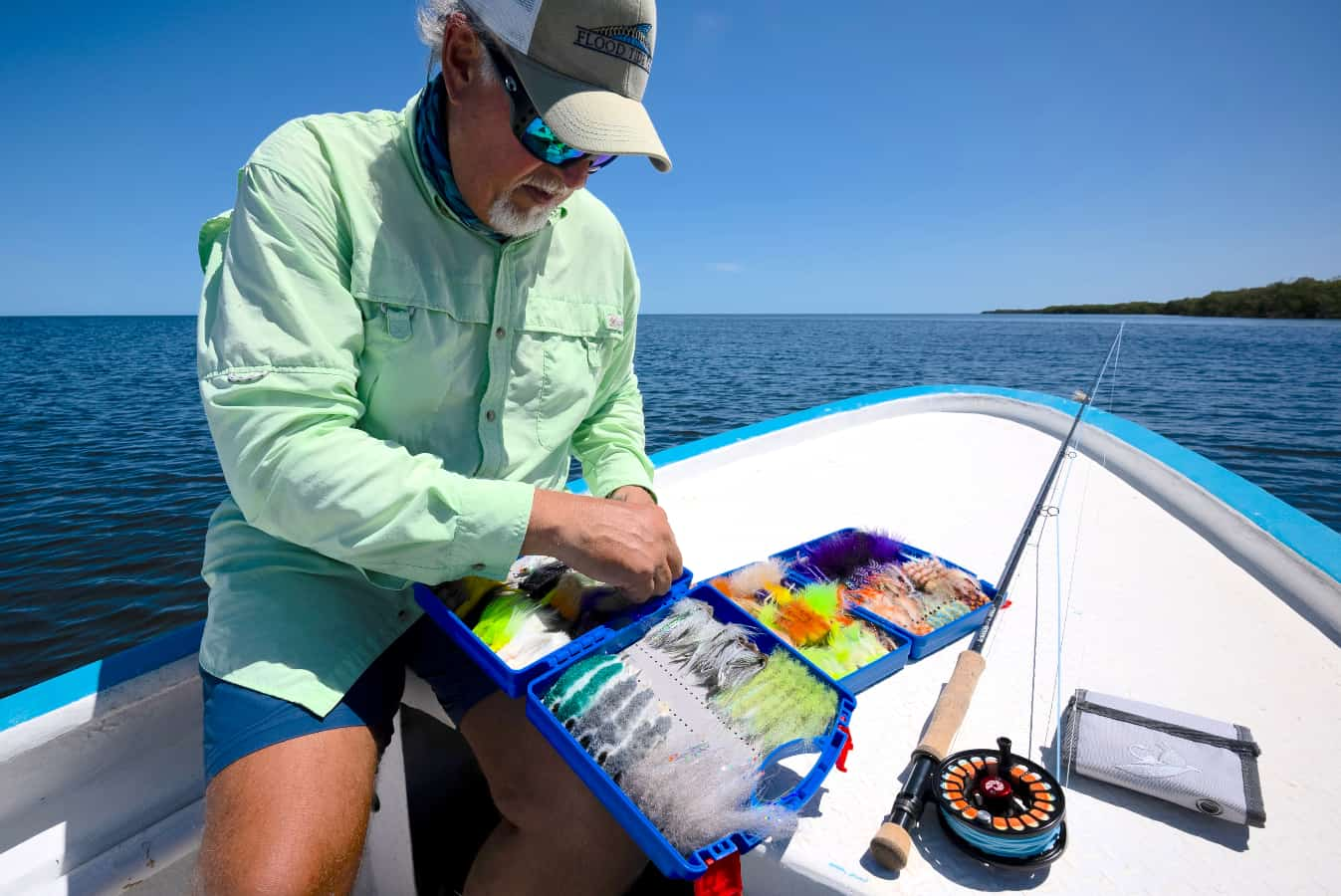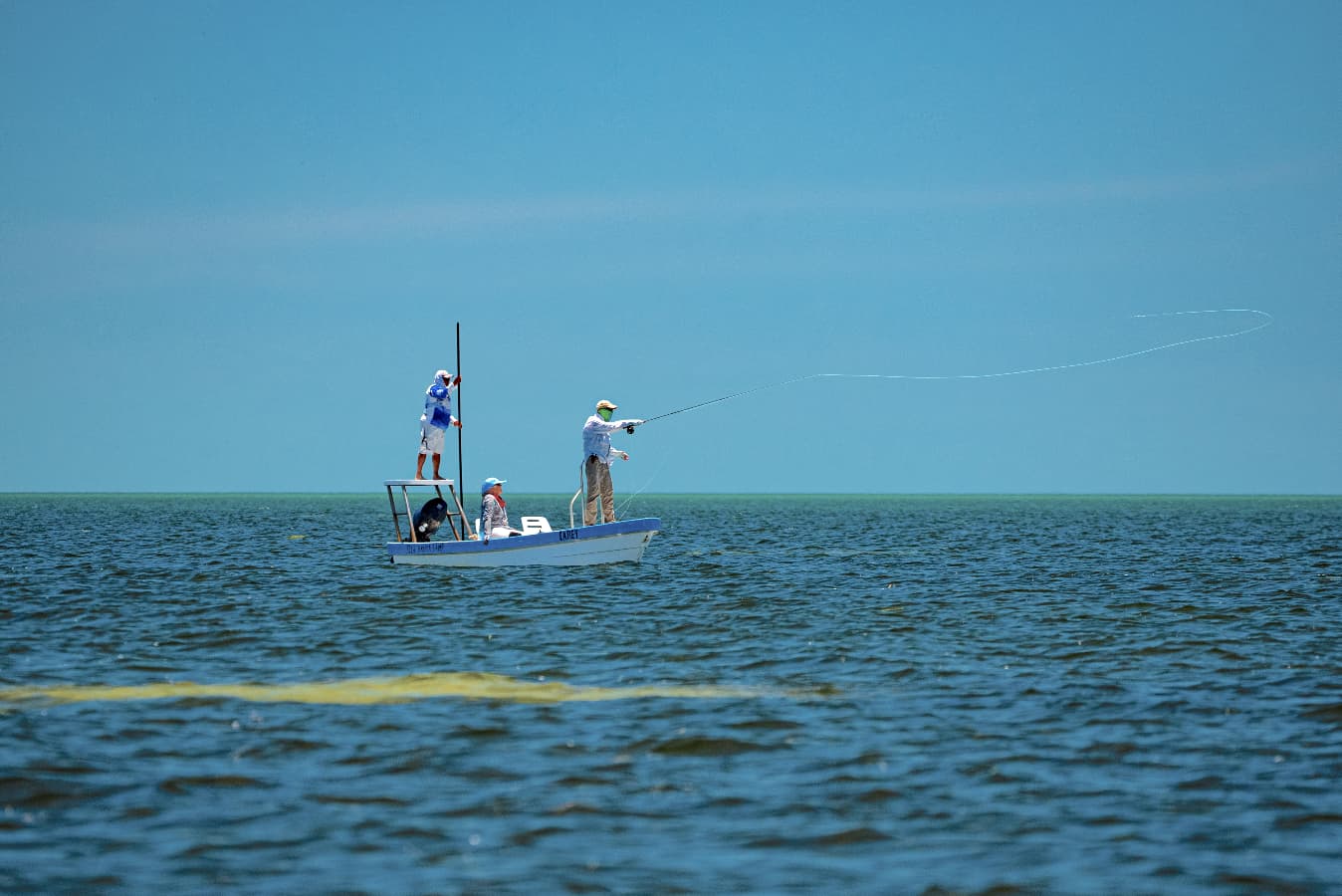How to Become an Expert Saltwater Fly Angler

Images by Dan Favato
Getting out on the water frequently to gain experience is fundamental, but there are other things you must do to improve your overall saltwater skills. Here are the most likely to shorten your learning curve and turn you into a complete and accomplished saltwater fly angler.
Find a Mentor
Whether you are a newbie or seasoned, salty fly rodder, you can always learn something new from fellow bug flingers, so finding a couple of saltwater veterans to fish with now and then is an excellent way to get some tutoring. Your local fly shop is an ideal place to meet likeminded anglers and potential new fishing buddies. Joining a fly-fishing club near the coast is another. Most organize frequent outings and tend to pair up newcomers with longtime members who can show them the ropes. After you have attended a few club meetings and an outing or two, approach some of the more experienced members and express your desire to learn and improve your saltwater skills. Just don’t be too eager and push yourself on them, folks aren’t likely to share their hard-earned expertise until they feel comfortable with you.
Whenever you fish with someone new, refrain from bombarding them with questions. Let the flow of information happen naturally, and keep your eyes and ears open. You will see how to locate and approach fish, and also pick up better ways to rig leaders, cast and work a fly just by watching the guy next to you. As a bonus, valuable nuggets of information will surely be volunteered during casual conversation. If you are having trouble with a particular skill or technique, bring it up while still out on the water, where you are likely to receive the needed pointers.
Don’t Wait for Fair Weather
The really good fly anglers catch fish in all kinds of weather, so don’t wait for days with clear skies and calm wind to get on the water. There is no need to brave extreme conditions, but it is important to learn to deal with certain curves that mother nature will often throw at you. When it is windy, simply fish in the lee of an island, tall shoreline or jetty that offers at least some shelter. If cloudy skies make sight-fishing difficult, locate an area with light bottom where the dark silhouettes of fish present enough contrast to stand out despite overcast conditions. You could also resort to blind-casting around schooling baitfish or fish-holding structure like rock piles, oyster bars, dock pilings, sunken tree stumps, mangrove roots, troughs stretching along shorelines or potholes in the middle of a grass flat.
Have a Backup Plan
Anyone who fishes regularly knows that things rarely go exactly as planned. Eventualities, like a sudden change in conditions or the lack of current or sufficient tidal movement, frequently force anglers to scrap their best laid plans, so it is important to have other options. In case your originally intended area is not fishable, keep a couple of nearby alternate spots in mind, and carry the gear you might need to be successful if the primary target species refuses to cooperate and you are forced to set your sights on other gamefish.
Scout New Spots
Always fishing the same few spots, no matter how productive they have proven over the years, will catch up with you sooner or later. Sometimes weather conditions will render your perennial go-to places unfishable. On other occasions, especially during weekends and holidays, other anglers will get to the spots first. It is imperative to scout new areas on a regular basis and commit to trying at least one new spot every time you go out. The right water temperature, movement and clarity, and the presence of forage are the key factors to look for when searching for new places with potential. If you build a repertoire of diverse fishing spots, you will greatly reduce your chances of getting skunked.
Try New Things
Fly-fishing gear and techniques evolve and progress with the times, and so do the better anglers. Don’t be so set in your ways that you won’t give new fly patterns a try, refuse to learn a better way to tie a leader, or dismiss an increasingly popular tactic. Always keep an open mind and remain receptive to new ideas, even those that come from younger fly anglers that may lack your overall fishing expertise. Remember that those who focus on a specific target species or fishing tactic are typically the ones who come up with new fly designs and develop more effective techniques.
Observe and Listen
Too many fly anglers are so concerned with making picture-perfect casts that they forget to pay attention to their surroundings. Only by watching and listening will you identify clues and make the crucial adjustments that lead to a successful day on the water. For example, the direction and speed at which clumps of floating sargassum drift by or the way blades of seagrass on the bottom of a shallow bay bend will reveal important intel about the current or tide. Birds circling over a spot or dipping toward the water indicate schooling baitfish, and possibly gamefish underneath. Baitfish or shrimp jumping frantically out of the water divulge the prevalent prey in the area, as well as the presence of predators. Surface busts and fish chasing prey are conclusive evidence of feeding activity.
Remain Inquisitive
Never assume that you already know everything there is to know about your favorite tactics, target species or fishing area. Try to keep up with recent developments in fishing regulations, conservation measures and gear designs and techniques, as well as new fisheries and destinations. Midcurrent and various fly-fishing magazines and websites are good sources for information and make short order of finding reliable intel and videos that shed light on the latest gear, recent discoveries and the nuances of tying improved leaders, intricate fly patterns and more.
Keep a Journal
Even if you are among the lucky who possess a photographic memory, it is unlikely that you will remember every aspect of every catch after a while. Therefore, it makes sense to log (in a notebook or computer) the details to recall and examine the common denominators that led to past successes, at least until connecting the dots becomes second nature. Start by writing down the date of each catch, then add the weather conditions, including wind direction and speed, and whether it was sunny, overcast or rainy. Identify the exact location with either coordinates or nearby landmarks, and don’t leave out specifics like water depth, the particular piece of structure the fish related to (floating or fixed). Also jot down the lunar phase, and both the tidal stage and (after checking the tide table) the height. And don’t forget to list the fly pattern you were using, including the color, size and weight, and any details you found interesting or unusual. If you get in the habit of ending every fishing day with a journal entry, your logging will be more consistent and your deductions more accurate, when you compare notes before your next outing.
Forecast And Focus
The majority of saltwater gamefish are opportunistic feeders and won’t eat all the time. They mostly adhere to certain periods of heightened feeding activity —usually sparked by the abundance of easy prey, and the ideal tide stage and atmospheric conditions— between which fly anglers face intervals of inactivity. During summer, when midday water temperatures often soar beyond the tolerance range of many species, the action declines for a few hours. Some anglers pack it in then, others simply hangout at their favorite spot until the next feeding period. But the more successful remain alert and on the lookout for other opportunities whenever the bite slows down. They also learn to forecast when and where the fish are most likely to feed again, and plan to be at the right spot at the right time to cash in.
When forage is unusually abundant, however, like during shrimp runs or baitfish migrations, gamefish take advantage and feed recklessly, paying little mind to the tide, water temperature or weather conditions. In the midst of such frenzies, it is imperative to stay clear of other fly anglers casting from the same boat or the immediate vicinity, check hook points for sharpness periodically and leaders for chafing after every fish hooked. Stash the landing net away after every use, and keep gear bags and other potential obstacles out of the boat’s cockpit or casting deck where they may catch the fly line or cause you or another angler to trip.
Desired Results
Becoming an expert at anything never happens overnight. The process entails a collection of incremental gains and achievements that methodically raise one’s level of knowledge and skill. The same can be said with regards to saltwater fly fishing. Nevertheless, every angler’s thirst for knowledge and their approach to quenching it will determine if and when they will reach the sport’s highest echelon. As in athletics and in business, the level of dedication commonly dictates the results. I know a couple of saltwater fly anglers who achieve rockstar status in just a few years, and I bet they put in plenty of overtime to get there.














